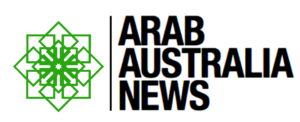The Melbourne Cup, or “the race that stops the nation” has been an unquestioned centre piece of Victorian and Australian sporting culture for over 150 years, and still is according to the latest financial earnings and released engagement metrics.
Victorian Racing Club reported that in 2023, a total of $468 million was generated for the state of Victoria as a result of the Melbourne Cup Carnival, which shows an increase of around 10% from the previous year. There is evidence to suggest that there is an increasing ambivalence or even outright hostility toward the spectacle, especially in light of recent controversies surrounding horse racing and sponsorship abandonment. This can be observed as a generational shift toward a demographic that appears increasingly concerned about ethics over tradition.
Recent research into the interest in the Melbourne Cup supports the notion of general waning interest. According to a recent “Essential” poll, 62% of people surveyed had little to no interest in the event. The disparity in interest between young and older people displayed only 9% of people aged 18-34 showing high interest in the event compared to 13% of over 55’s.
It is not just growing indifference that influences these statistics; 48% of respondents believed the carnival promotes unhealthy gambling activity, among others. Gambling advertisements are rife during most sporting events. It is not uncommon to see betting odds before an AFL match but it is most noticeable during the spring racing carnival which already sees a spike in betting.
Two fifths of the respondents of the survey indicated they will place a bet on the race. A significant proportion of that sample were not engaging in the activity beyond the event.
Australia in general already has a gambling problem. It is nearly a $25 billion industry with our total losses doubling the US. After over one million gambling advertisements aired between 2022 and 2023 the losses are not a surprise, and the Melbourne Cup only serves to exacerbate our national problem.
Another influence would be the increased awareness of animal cruelty in the industry. 36% of respondents to the “Essential” poll believe the event promotes animal cruelty, which is consistent with the trajectory of public sentiment catalysed by scandals that have sprung up around the racing industry. This includes a 2019 investigation by the ABC, leading to movements such as “Nup to the Cup” gaining traction. It also led to corporate sponsors including Myer, AAMI and Network 10 to end their partnerships with the Victorian Racing Club for the Spring Racing Carnival season.
Despite growing community concerns about the ethics of the industry, wider research has indicated that the Melbourne Cup is as profitable and engaged with as ever, and the event has an overall positive impact on the national economy.
Market research company “IER” found that $605 million of direct expenditure was generated across Australia as a direct result of the Melbourne Cup Carnival in 2023, financially benefiting a myriad of industries across the country including tourism, retail and hospitality.
Contrary to the assertion that the youth are increasingly disengaged with the event is the fact that over 20% of overall attendance for the carnival was in the 18-29 year demographic. Attendance at Flemington Racecourse was over 260,000 during Cup Week, and nearly 68,000 visitors to the state can be directly attributed to the event. 11 million people engaged with the Melbourne Cup in some form- whether it be watching, listening or attending a function to celebrate it. Even 65% of the aforementioned “Essential” poll conceded that the event is an important and unique element of the Australian national identity, and the engagement metrics collated by wider research more than support this.
Overall, it cannot be definitively stated that “the race that stops the nation” is at risk of stopping itself in the short term. There is too much of a recent measurable positive financial impact and presence within the Australian national psyche to enable this. However, said presence is not unconditional. Increased awareness about ethical issues encompassing the industry is driving the loss of financial backing and public support, and if nothing is done to alleviate these concerns in the long term the industry may find that the younger generations don’t find the spectacle nearly as fashionable.
Oliver Florance
Sources
https://reporter.anu.edu.au/all-stories/has-the-melbourne-cup-run-its-race









